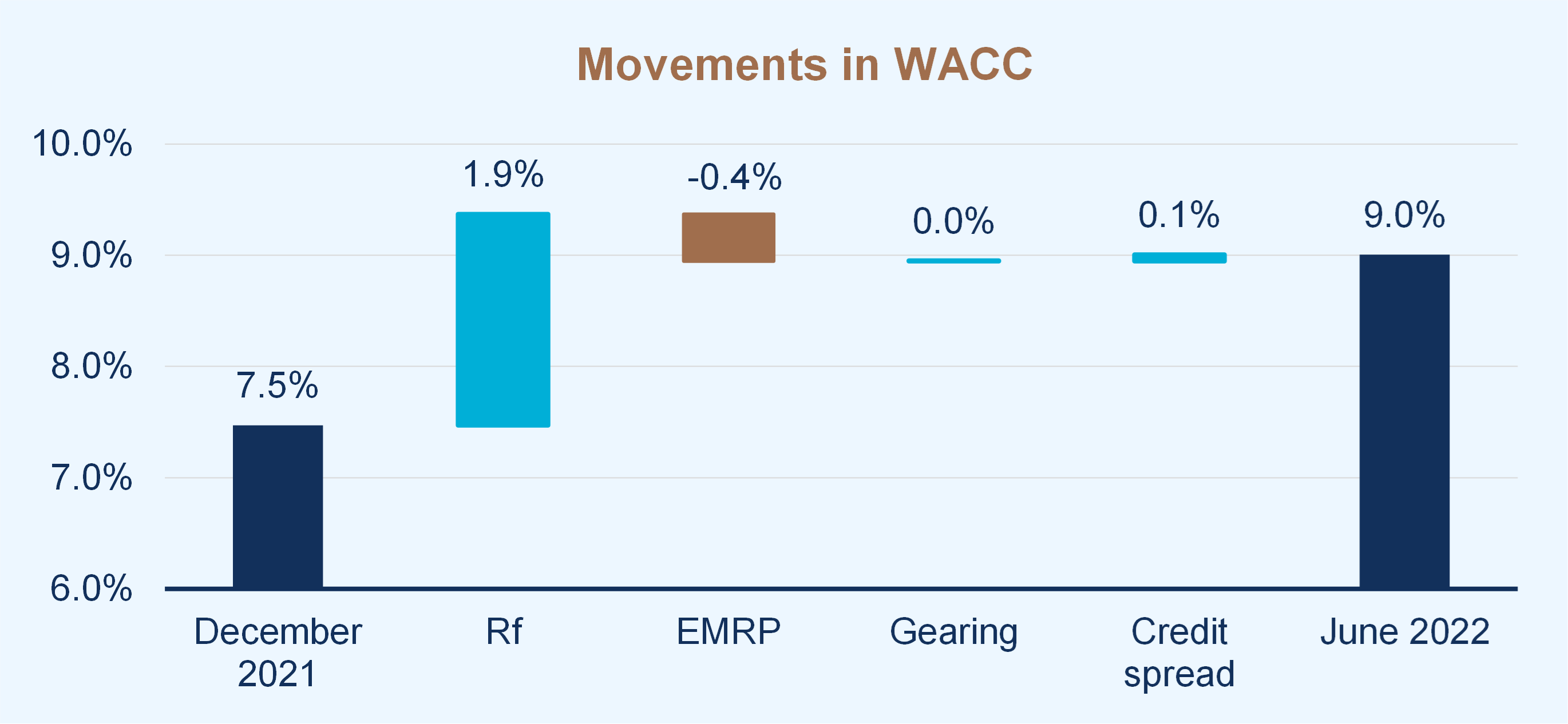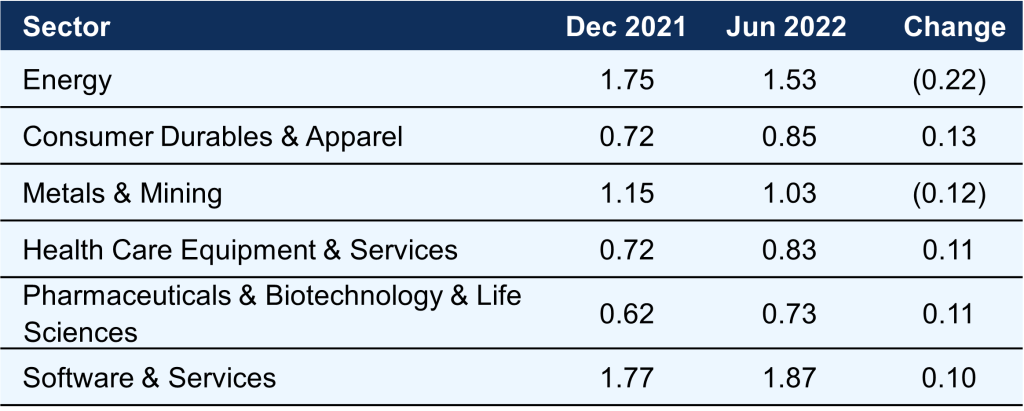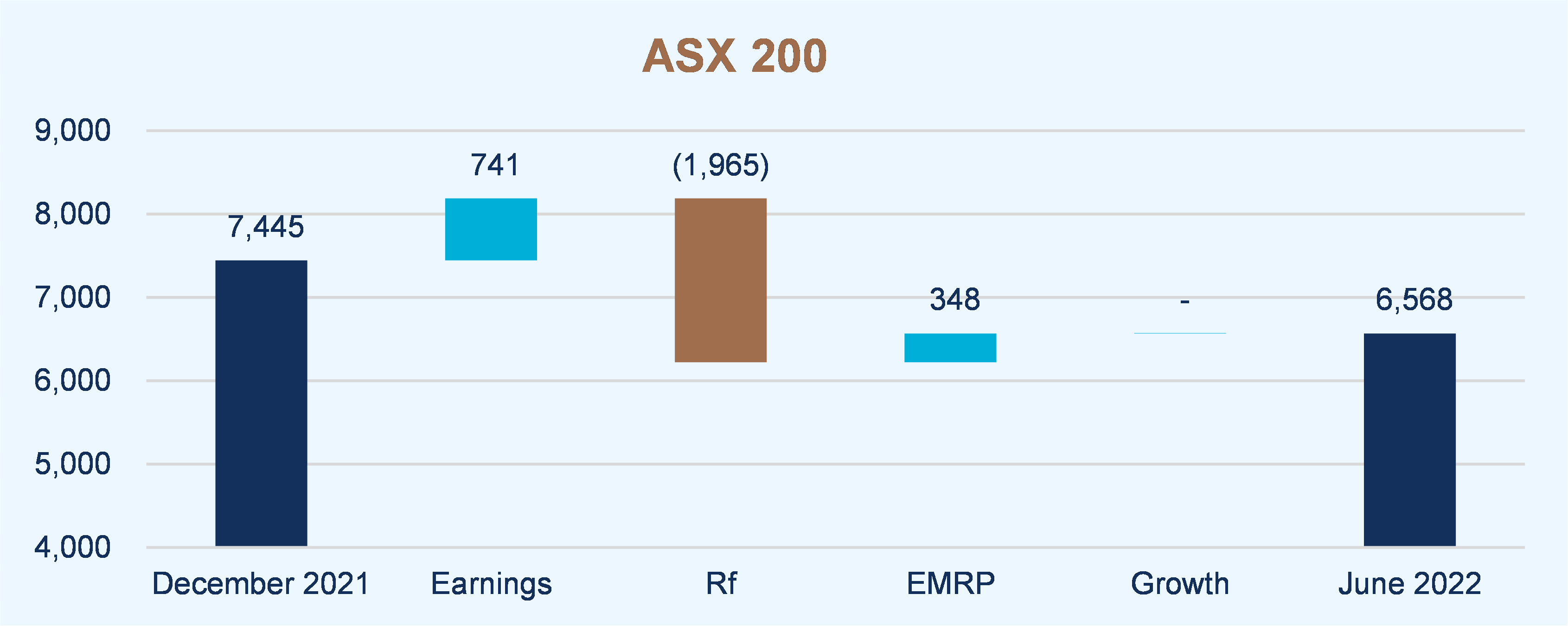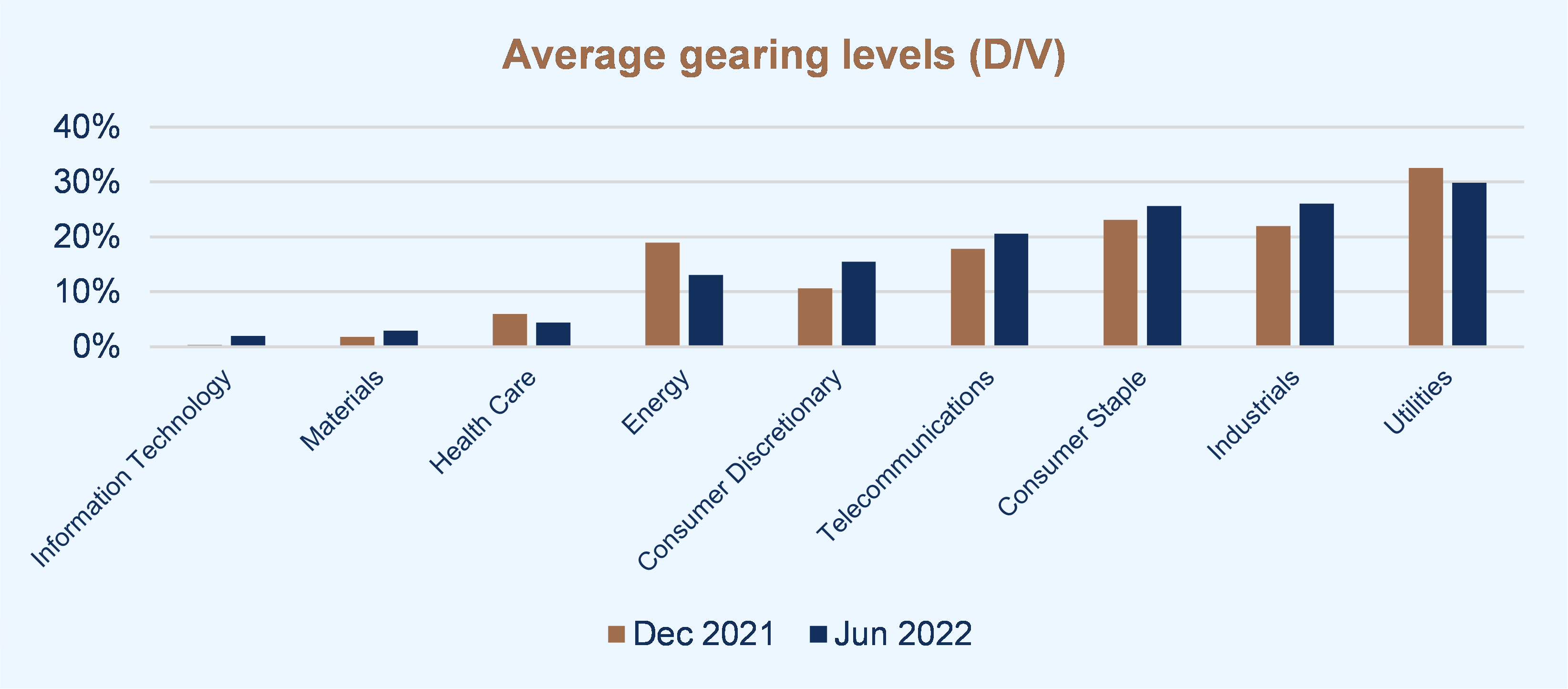1. Market discount rate update - introduction
Global recession fears, alongside rising inflation and interest rates, have fuelled market volatility in recent months, driving a decline in markets towards the end of June 2022. The selection of a reasonable discount rate therefore remains a key consideration, whether for the purpose of financial reporting or for any valuation analysis.
The following chart presents a summary of the overall change in our assessment of the weighted average cost of capital (WACC) for the market as a whole from 31 December 2021 to 30 June 2022.
Market discount rates have risen
Source: Leadenhall
Note: Movement in WACC is for the overall market and is not company specific.
“Global inflation is high. It is being boosted by COVID-related disruptions to supply chains, the war in Ukraine and strong demand which is putting pressure on productive capacity. Monetary policy globally is responding to this higher inflation, although it will be some time yet before inflation returns to target in most countries.”
Philip Lowe, RBA Governor – The RBA and the Australian Economy, Address to CPA Australia Riverina Forum
“Many companies are facing changing market conditions and uncertainties. Directors and preparers should assess the impact on current and future performance, asset values and provisions.”
ASIC – focus areas for 30 June 2022 reporting
The cost of capital has increased over the period due to a rise in the risk-free rate, moderated by a decline in the equity market risk premium (EMRP). All other things being equal, this will lead to lower asset values.
The ongoing economic uncertainty does not alter the best practice approach of using expected cash flows as the basis for valuations. In fact, the greater uncertainty associated with future earnings indicates that additional rigour may be required in developing robust projections. These forecasts should be coupled with an appropriate discount rate.
As recognised experts, this update helps you understand the assumptions we make which you can rely on for a reasonable outcome.
Leadenhall Solution:
2. Framework
Weighted Average Cost of Capital
Model
WACC = Ke x (E/V) + Kd x (D/V) (1-t)
Components
WACC Weighted average cost of capital
Ke Cost of equity
E/V Proportion of equity in capital structure
Kd Cost of debt
D/V Proportion of debt in capital structure
t Corporate tax rate
V Market value of business (where V = D + E)
Capital Asset Pricing Model
Model
Ke = Rf + β(Rm – Rf) + α
Components
Ke Cost of equity
Rf Risk free rate
β Beta, a measure of exposure to market risk
Rm Required return from investing in the market
Rm – Rf Equity market risk premium
α Company specific risk premium
Application to Specific Businesses
3. Selecting the risk-free rate (Rf)
Risk-free rates remain close to historical lows
Dec 2021
1.67%
Jun 2022
3.66%
Change
1.99%
The sharp rise in government bond yields since December 2021 is likely to result in an increase in overall discount rates, all other things being equal.
Despite the recent rise in bond yields, risk-free rates remain at historically low levels. Rather than adopting current market observed risk-free rates, some valuers are adjusting observed risk-free rates to reflect a long-term average rate. However, some of these valuers are then not adjusting other parameters accordingly – leading to inconsistent and unreliable discount rate conclusions.
Leadenhall Solution:
4. Assessing Beta (β)
Observed industry betas have remained broadly unchanged
Source: RoZetta Institute Ltd – Risk Measurement Service as at 31 March 2022 (latest available)
Leadenhall Solution:
5. Cost of debt (Kd)
Lending rates are rising

Leadenhall Solution:
6. Declining market risk premium
Decline in the implied EMRP
Source: Leadenhall
Note: Growth relates to longer-term growth expectations, not the near-term earnings which are expected to be impacted by the COVID-19 recovery.
Leadenhall Solution:
Leadenhall Solution:
8. Our other concerns that may attract attention
Given the impact of the COVID-19 response on economic activity and the heightened uncertainty around future earnings and cash flows, emphasis should be placed not only on the discount rates adopted but on the preparation of robust cash flow projections. Some common issues we have observed are:
◆ Optimistic forecasts with insufficient allowance for capital investment and / or time to recovery
◆ Inconsistencies between the discount rate and cash flows
◆ Relying on a single valuation methodology without considering any cross-checks
Our difference
1 Accounting standard AASB 136 – Impairment of Assets requires value in use to be assessed with a pre-tax discount rate (paragraph 55). However, market practice in Australia is to perform this analysis using a post-tax discount rate (and post-tax cash flows), with the implied pre-tax discount rate being disclosed in the financial statements.


